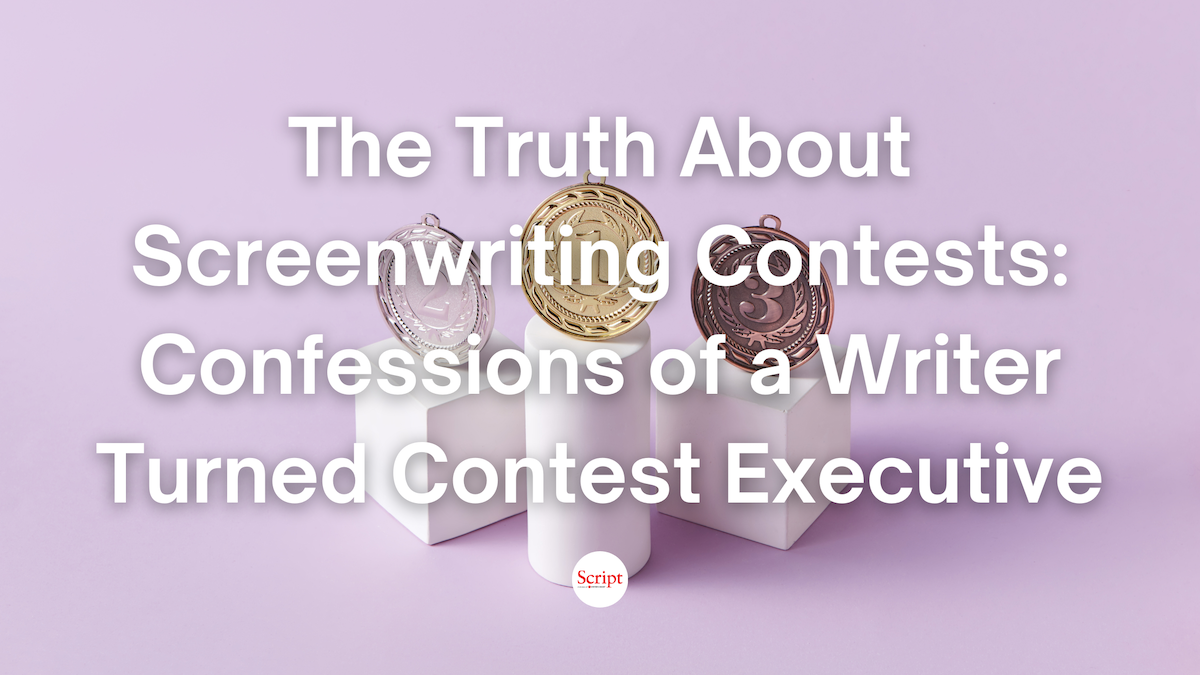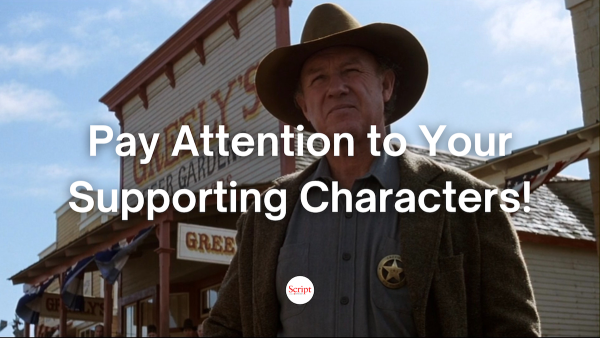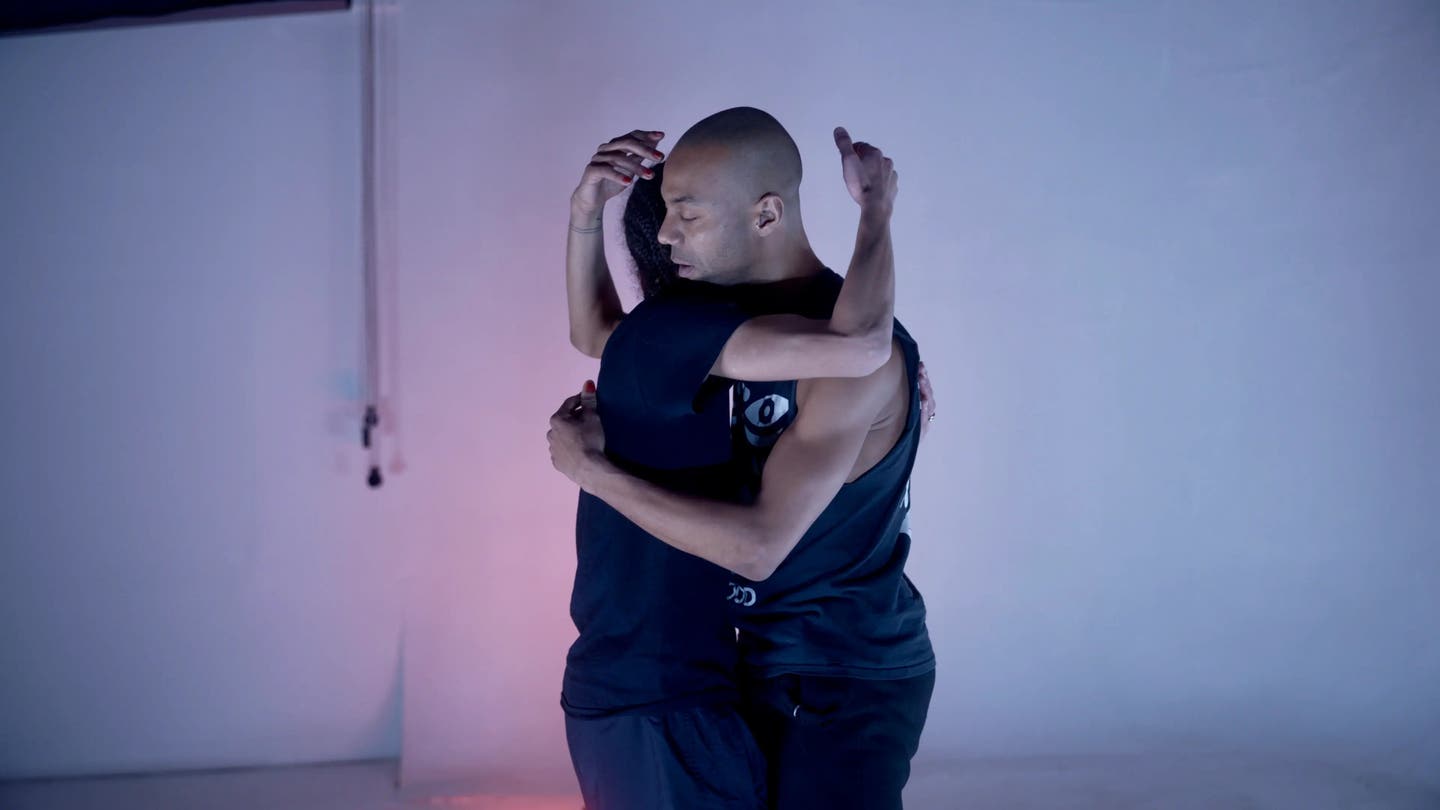Screenwriter’s Guidepost: The Art of Taking Notes
Here are 3 tips on taking notes that will hopefully save you much suffering, make your current script better, and, maybe, even elevate your storytelling for all projects going forward…
Mario O. Moreno is a Story Specialist for The Writers Store and a budding screenwriter. He's been an Academy Nicholl Fellowships Quarterfinalist, Final Draft's Big Break Semifinalist and Austin Film Festival Finalist, and co-authored The Pocket Screenwriting Guide: 120 Tips for Getting to FADE OUT. Follow Mario on Twitter @MarioOMoreno37@PktScreenGD
Question: “How can I avoid weeping every time I get notes?”
When I first arrived in L.A., my writing partner (at the time) and I had two sample scripts that an exec had “loved,” and a manager that the exec helped us find. I imagined our first real meeting with said manager would be ceaseless, unadulterated praise and maybe some minor trim notes.
SMASH CUT TO:
INT. STARBUCKS ON 26TH AND WILSHIRE – DAY
The MANAGER, late-20s, spunky, stares at the 2 GREENEST WRITERS in L.A. (think a young Laurel & Hardy) dead in the eyes as she drops their script on the table with a THUD.
MANAGER
It’s a page one rewrite.
GREENEST WRITER IN L.A. #1
A what?
Here’s the wrong way to deal with feedback:
We staggered out into the Santa Monica sunset, unsure what to do next. So we griped. We griped so much that it lasted all the way in L.A. traffic to the West side…
…And continued as we went inside my former writing partner’s apartment, where his roommate, a writer/director was waiting to hear the anticipated feedback.
After beginning the highlights: “Page one rewrite, my ass…” my former partner excused himself.
I continued the rant for what must’ve been forty-five minutes. It was Gripe-a-palooza.
Immediately afterwards, as alcohol began to ease the pain from the notes, my phone rang. It was the manager. She asked how I was feeling.
“Fine,” I said. “Just going over the notes.”
She took a deep breath:
“I don’t know how else to say this… your phone must have called me… because I’ve heard everything you just said.
Gulp.
“All of it.”
Oh, yeah. This really happened.
Well, she didn’t hear all of it.
She hadn’t heard a word my writing partner said. It must’ve been because I am the loud child of a Cuban mother, and the phone was in my pocket. Didn’t matter.
The manager tore me a new one. Eventually, she said she'd give some thought to whether she wanted to continue representing us.
We hadn’t even shopped a script yet!
Don’t let this happen to you.
Start by always locking your phone. Continue by embracing the concept of notes.
Like death, taxes and cockroaches, notes will always be a part of the writing life.
There’s no getting around them. So, then, how best to deal with notes?
Here are 3 tips on taking notes that will hopefully save you much suffering, make your current script better, and, maybe, even elevate your storytelling for all projects going forward:
1. LISTEN. NO ONE IS TRYING TO HURT YOU.
(Unless they’re an asshole, and then now you know.)
No one hopes to be disappointed when they read a script. When readers offer us notes, their motivation is usually to help strengthen what’s on the page.
The aim is to find pockets of opportunity in the script, and to find cuts that elevate the beats around them. It’s coming from a desire to see something be the best it can be.
So don’t fight the feedback. Let the reader share all their thoughts on the current draft with you. Jot them all down and decide what works later. Sleep on it.
You don’t have to take all the notes, but debating the reader isn’t going to accomplish anything, except making them wonder why you asked for feedback to begin with.
The most experienced writers often sound like this when jotting down notes:
“Okay. That’s interesting. Okay. Let me think about that one. Oh, that’s good. Okay. Okay. Okay...”
The least experienced writers tend to sound like this (while not jotting down notes):
“You clearly don’t understand what I’m writing about. Did you even read it? No, I don't like that. You don’t know what you’re talking about. I’ve [insert list of career accomplishments here].”
Readers want conflict on the page—not at the story meeting. A combative writer can cause a reader to hold back from offering what could turn out to be the note that pulls the whole story together.
Creative criticism is not an assault on our value as a human being. It’s just a subjective assessment of the current draft’s effect on one reader.
Now, if two or more readers have the same note, then there’s probably something to it. The odds are that other readers will have the same note. That’s a red flag.
With that being said, if a reader gives petty notes that seem vindictive or unnecessary (“Your protagonist likes pancakes too much; it’s probably because you’re overweight” --actual note), act like an experienced writer and politely thank them for the feedback, then make a mental note to never share work with them again.
2. LOOK FOR THE NOTE UNDER THE NOTE
This often boils down to CLARITY. Forgetting about the roulette wheel of marketability, most scripts written by competent writers are held back by an assortment of unintentional interruptions to the read.
“What happens next?” is the most powerful question we can have our audience asking, page-by-page, line-by-line.
When the questions shift to “What just happened?” or “How the hell?” the story loses momentum as the reader tries to make sense of what they’ve just read.
These logic gaps aka “clarity bumps” disrupt the momentum of the read, but are often easy to fix.
So the issue may not actually be the argument about pancakes late in Act 2 of your rom-com; it may be something that wasn’t set up clearly in Act 1—like that idea your main character vowed to never love someone who didn’t love pancakes.
By hunting out the clarity bumps in our scripts, we can eliminate reasons for producers and representatives to pass on our projects.
If we eliminate enough reasons for them to say “no,” we may eventually hear the Y-word.
For example:
“It feels like there’s not enough conflict” can mean the protagonist’s goal and/or attitude isn’t clear enough to appreciate the challenge of the obstacles they encounter—or it can mean that your antagonist should challenge your lead more directly.
When I think back on that nightmarish first story meeting and its aftermath, I recall the manager saying that “the information” was “on the page,” but that she “wasn’t feeling it.”
I didn’t know what the hell that meant then.
Now I know that the script was describing action and relaying dialogue, but it wasn’t aiming to illicit an emotional response from the reader, and thus, all that sound and fury was signifying bupkis.
Don’t take every note at face value. Look for the root. Then attack the heart of the issue.
3. BECOME A MIX MASTER
Writers can apply notes the same way Martin Scorsese, Woody Allen and countless others take pieces of work that’s influenced them:
Chop it, rearrange it, mix the levels and scratch-scratch-scratch out a new hybrid.
Just like DJ Shadow, Mix Master Mike and J Dilla.
The Midas touch comes from many hands. My Midas is the writers group I’m in, a motley crew of trusted readers and devil’s advocates.
I try to give everyone’s notes a chance. Part of this is looking at every piece of the story and the notes as malleable.
Every combination of elements leads to another take of the concept.
Holding the story loosely allows for the rearranging of components until everything clicks.
One reader’s notes may suggest that the female lead needs more to do.
Another reader’s notes may suggest that a supporting character should be cut because—while their job is interesting—the character doesn’t add much to the story.
Well, what if we cut the unessential supporting character and give his interesting job to the female lead?
But how can we know when—and how—to do that?
Read, write, live, listen; become aware of emotions that flow through experiences. Develop an artist’s antennae, hone it, and then utilize it with creative intelligence (remember there's a ripple effect to any change).
Easier said than done. There's no magic formula.
But it boils down to maximizing our instincts: What do we feel? What do we want to see?
What would make us jealous if someone else wrote it?
THE AFTERMATH OF MY FAILURE TO TAKE NOTES WELL
We’d only been in L.A. a few weeks, but we were about to be worse off than when we arrived. All because we’d failed to:
-Understand the notes were coming from a constructive place
-Search for the notes under the notes
-Recognize notes are an opportunity to mix the best options into a new hybrid
-Lock the cell phone
We didn’t know to look at each note as an opportunity: a chance to become stronger storytellers.
Ultimately, it took serious cajoling from our industry contact to sway the manager.
She said the only reason to keep us as clients was because my writing partner (at the time) didn’t deserve to suffer for my inability to handle notes.
Don’t let this happen to you.
(I’ve used that line twice in this piece. Should I trim one? What do you think?)
- More articles by Mario O. Moreno
- Screenwriter's Guidepost: 'How do I know when my script is done?'
- Balls of Steel: Getting Honest Feedback
Get advice on your scripts, pitching, treatments, loglines and more with
ScriptXpert Services at The Writers Store
Mario is a Cuban-Colombian-American author, screenwriter, and former graffiti artist, Bronx-born, Miami-raised. He’s written stories for Columbia Pictures, Rabbit Bandini, and the National Institute of Cinema and Audiovisual Arts (INCAA). The grandson of legendary bandleader Belisario López, Mario dreamt of playing the bass. But his father went to prison for crimes involving the White House and the mob, and Mario ended up writing noirs about the American Dream. He’s also the Product Manager for Final Draft, driving the development of the industry-standard screenwriting software while advocating for storytellers. His new book “KILLA: A Mixtape Novella," adapted from his Austin Film Festival-finalist script is available for purchase at major online retailers and through select independent booksellers. Follow Mario on Twitter @MarioOMoreno37 and @PktScreenGD and Instagram at @mariomoreno37







